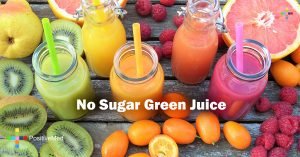
A groundbreaking deep-learning model developed by researchers at the Yale School of Medicine is poised to revolutionize the early detection of aortic stenosis, a prevalent heart valve disease. Aortic stenosis, characterized by the narrowing of the aortic valve, is a significant contributor to mortality and morbidity. However, its detection traditionally relies on specialized and often inaccessible ultrasound imaging. This novel deep-learning approach harnesses the power of artificial intelligence to analyze heart ultrasound scans, potentially enabling early intervention. This article explores how this innovative technology could transform healthcare by facilitating early disease detection.
The Challenge of Aortic Stenosis Detection
Early identification of aortic stenosis is crucial for effective patient management and risk reduction. The gold standard for detection is Doppler echocardiography, but its specialized nature limits its utility in early detection efforts. This challenge is exacerbated by the fact that relying solely on patients who reach echocardiographic laboratories may miss individuals in the early stages of the disease.
The Deep Learning Solution
The research team’s goal was to develop a deep-learning model that could enable point-of-care ultrasound screening for early aortic stenosis detection. Here’s how they achieved it:
Data Collection: The researchers compiled a substantial dataset of 5,257 studies from transthoracic echocardiography exams, consisting of 17,570 videos conducted between 2016 and 2020 at Yale New Haven Hospital.
Model Development: Leveraging this dataset, they developed a deep learning model designed to identify aortic stenosis in heart ultrasound scans.
Validation: The model’s performance was rigorously tested, achieving exceptional results:
- An area under the receiver operating characteristic curve of 0.978 in the test set.
- An area under the receiver operating characteristic curve of 0.952 in the California cohort.
- An area under the receiver operating characteristic curve of 0.942 in the New England cohort.
Potential Impact on Healthcare
The success of this deep learning model has significant implications for healthcare:
- Broader Screening: The technology could facilitate community-wide screening for aortic stenosis. Handheld ultrasounds, which are increasingly used in emergency departments and various care settings, might not require specialized equipment for this purpose.
- Early Intervention: Detecting aortic stenosis at an earlier stage can lead to timely interventions, potentially saving lives and reducing the burden of the disease.
Future Research and Deployment
While this deep learning model shows immense promise, further research and validation are essential before its clinical deployment. Ensuring its accuracy and reliability across diverse patient populations will be crucial.
Previous AI Efforts in Aortic Stenosis Detection
This groundbreaking research builds upon previous AI efforts in aortic stenosis detection. In 2021, Kaiser Permanente researchers demonstrated the potential of natural language processing (NLP) to assist clinicians in identifying aortic stenosis. Their NLP-based model combed through echocardiogram reports and electronic medical records to flag relevant data associated with the condition, significantly expediting the identification process.
In conclusion, the marriage of deep learning and healthcare holds tremendous promise, especially in the early detection of critical diseases like aortic stenosis. As technology continues to advance, it has the potential to transform patient care and improve health outcomes.





